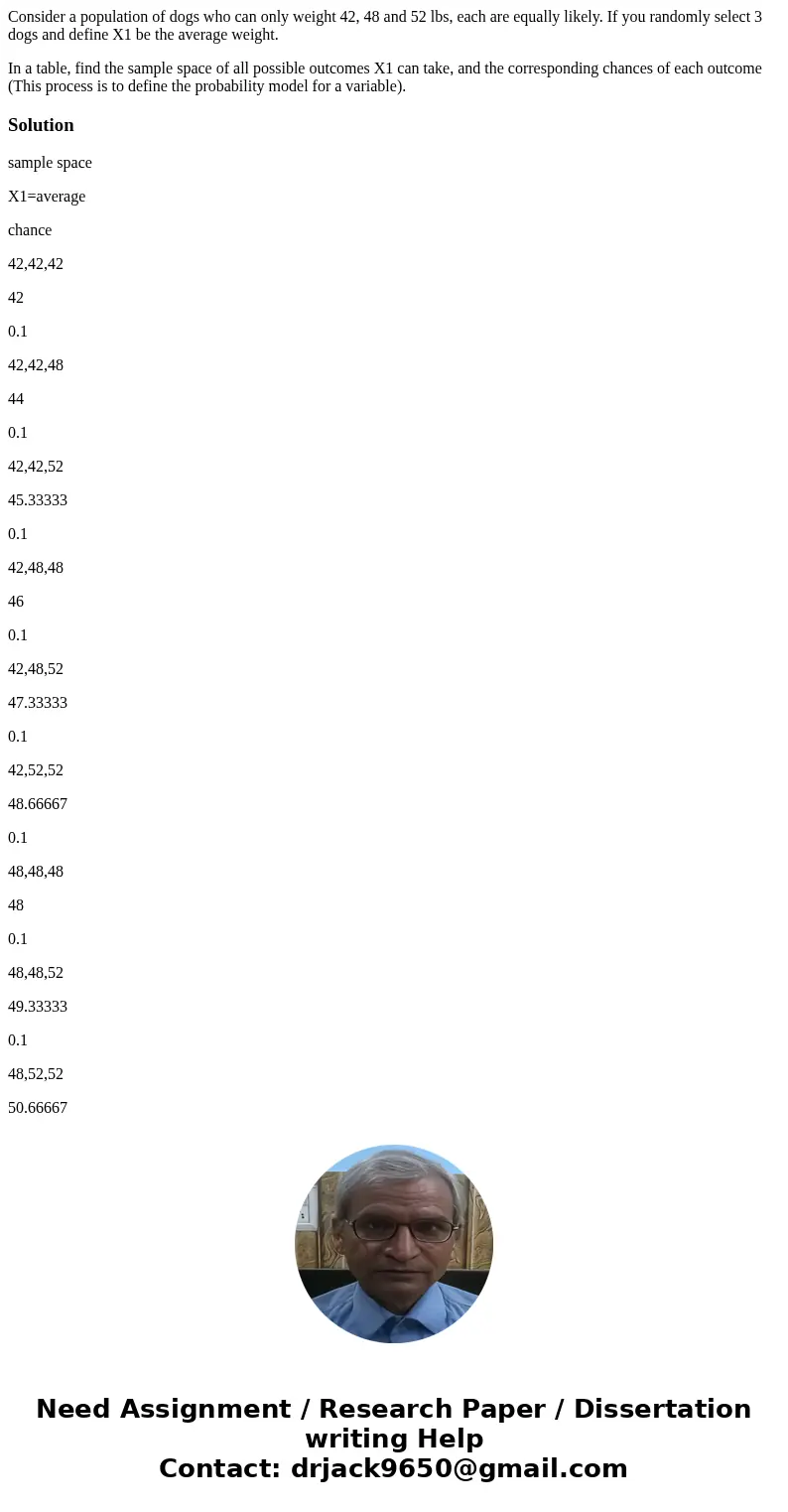Consider a population of dogs who can only weight 42 48 and
Consider a population of dogs who can only weight 42, 48 and 52 lbs, each are equally likely. If you randomly select 3 dogs and define X1 be the average weight.
In a table, find the sample space of all possible outcomes X1 can take, and the corresponding chances of each outcome (This process is to define the probability model for a variable).
Solution
sample space
X1=average
chance
42,42,42
42
0.1
42,42,48
44
0.1
42,42,52
45.33333
0.1
42,48,48
46
0.1
42,48,52
47.33333
0.1
42,52,52
48.66667
0.1
48,48,48
48
0.1
48,48,52
49.33333
0.1
48,52,52
50.66667
0.1
52,52,52
52
0.1
| sample space | X1=average | chance |
| 42,42,42 | 42 | 0.1 |
| 42,42,48 | 44 | 0.1 |
| 42,42,52 | 45.33333 | 0.1 |
| 42,48,48 | 46 | 0.1 |
| 42,48,52 | 47.33333 | 0.1 |
| 42,52,52 | 48.66667 | 0.1 |
| 48,48,48 | 48 | 0.1 |
| 48,48,52 | 49.33333 | 0.1 |
| 48,52,52 | 50.66667 | 0.1 |
| 52,52,52 | 52 | 0.1 |


 Homework Sourse
Homework Sourse